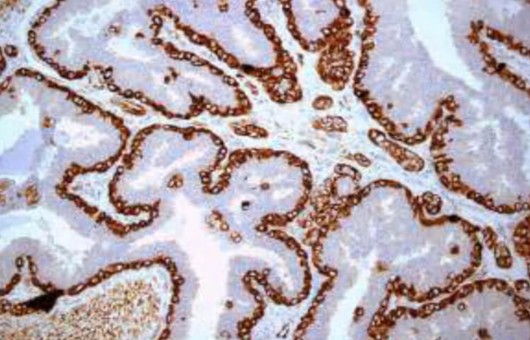Resources
-
Cell Services
- Cell Line Authentication
- Cell Surface Marker Validation Service
-
Cell Line Testing and Assays
- Toxicology Assay
- Drug-Resistant Cell Models
- Cell Viability Assays
- Cell Proliferation Assays
- Cell Migration Assays
- Soft Agar Colony Formation Assay Service
- SRB Assay
- Cell Apoptosis Assays
- Cell Cycle Assays
- Cell Angiogenesis Assays
- DNA/RNA Extraction
- Custom Cell & Tissue Lysate Service
- Cellular Phosphorylation Assays
- Stability Testing
- Sterility Testing
- Endotoxin Detection and Removal
- Phagocytosis Assays
- Cell-Based Screening and Profiling Services
- 3D-Based Services
- Custom Cell Services
- Cell-based LNP Evaluation
-
Stem Cell Research
- iPSC Generation
- iPSC Characterization
-
iPSC Differentiation
- Neural Stem Cells Differentiation Service from iPSC
- Astrocyte Differentiation Service from iPSC
- Retinal Pigment Epithelium (RPE) Differentiation Service from iPSC
- Cardiomyocyte Differentiation Service from iPSC
- T Cell, NK Cell Differentiation Service from iPSC
- Hepatocyte Differentiation Service from iPSC
- Beta Cell Differentiation Service from iPSC
- Brain Organoid Differentiation Service from iPSC
- Cardiac Organoid Differentiation Service from iPSC
- Kidney Organoid Differentiation Service from iPSC
- GABAnergic Neuron Differentiation Service from iPSC
- Undifferentiated iPSC Detection
- iPSC Gene Editing
- iPSC Expanding Service
- MSC Services
- Stem Cell Assay Development and Screening
- Cell Immortalization
-
ISH/FISH Services
- In Situ Hybridization (ISH) & RNAscope Service
- Fluorescent In Situ Hybridization
- FISH Probe Design, Synthesis and Testing Service
-
FISH Applications
- Multicolor FISH (M-FISH) Analysis
- Chromosome Analysis of ES and iPS Cells
- RNA FISH in Plant Service
- Mouse Model and PDX Analysis (FISH)
- Cell Transplantation Analysis (FISH)
- In Situ Detection of CAR-T Cells & Oncolytic Viruses
- CAR-T/CAR-NK Target Assessment Service (ISH)
- ImmunoFISH Analysis (FISH+IHC)
- Splice Variant Analysis (FISH)
- Telomere Length Analysis (Q-FISH)
- Telomere Length Analysis (qPCR assay)
- FISH Analysis of Microorganisms
- Neoplasms FISH Analysis
- CARD-FISH for Environmental Microorganisms (FISH)
- FISH Quality Control Services
- QuantiGene Plex Assay
- Circulating Tumor Cell (CTC) FISH
- mtRNA Analysis (FISH)
- In Situ Detection of Chemokines/Cytokines
- In Situ Detection of Virus
- Transgene Mapping (FISH)
- Transgene Mapping (Locus Amplification & Sequencing)
- Stable Cell Line Genetic Stability Testing
- Genetic Stability Testing (Locus Amplification & Sequencing + ddPCR)
- Clonality Analysis Service (FISH)
- Karyotyping (G-banded) Service
- Animal Chromosome Analysis (G-banded) Service
- I-FISH Service
- AAV Biodistribution Analysis (RNA ISH)
- Molecular Karyotyping (aCGH)
- Droplet Digital PCR (ddPCR) Service
- Digital ISH Image Quantification and Statistical Analysis
- SCE (Sister Chromatid Exchange) Analysis
- Biosample Services
- Histology Services
- Exosome Research Services
- In Vitro DMPK Services
-
In Vivo DMPK Services
- Pharmacokinetic and Toxicokinetic
- PK/PD Biomarker Analysis
- Bioavailability and Bioequivalence
- Bioanalytical Package
- Metabolite Profiling and Identification
- In Vivo Toxicity Study
- Mass Balance, Excretion and Expired Air Collection
- Administration Routes and Biofluid Sampling
- Quantitative Tissue Distribution
- Target Tissue Exposure
- In Vivo Blood-Brain-Barrier Assay
- Drug Toxicity Services
Serial Sectioning Protocol
GUIDELINE
- Serial sectioning is the procedure of collecting and mounting sections on a slide in the sequential order in which they were cut on the microtome. A ribbon refers to the sequence of connected sections pulled from the microtome.
- Conventional tumor histopathological sections are generally sliced in parallel at certain interval distances, and this slicing method cannot effectively observe the growth characteristics of tumor tissue from inside to outside, and there is no continuity between individual slices, and continuous slicing to observe the three-dimensional whole tissue state cannot be realized.
- Here, a method for making continuous pathological sections of tumor tissues is provided, aiming to solve the problem that traditional tumor tissue sections are not continuous and cannot observe the growth characteristics of tumor tissues from inside to outside.
METHODS
- Pretreatment. Fresh tumor tissues from animals were selected, and the fixative was infiltrated into the interior of the tissues by injection or perfusion method, and the dehydrating agent was selected to replace the water in the fixed tissues, and the transparent agent was used for transparent treatment.
- Wax immersion and embedding. Paraffin wax is dipped into the tissue to replace the transparency agent; the wax-impregnated tissue is placed in the melted solid paraffin wax, and after the paraffin wax solidifies, the tissue is embedded to form a wax block.
- Slicing. After trimming the wax block, the block is fixed and sliced using a vertical slicer or a circular slicer in concentric circles or in a spiral trajectory at any point along the outer edge surface of the block.
- Spreading of slices. The slices obtained in the previous step were divided into different samples, and after the samples were numbered, the samples were laid flat on the surface of water at 40-45°C, and the slightly wrinkled samples were spreading naturally by the tension of water and the temperature of water.
- Patching and baking. Place the samples on the slides sequentially according to the number and bake the slides to remove the remaining water.
NOTES
- The slicing knife must be sharp, with even force and slicing thickness of 3-5 microns. The slices are intact and free of contamination and wrinkles.
- Large and small specimens must be handled separately, and the fixation time of large specimens must not be less than 6 hours; small specimens must not be less than 3 hours. The fixation solution must be replaced in time and must be rinsed under running water after fixation.
- Gastroscopy, puncture and other small biopsy tissue sections must be made in continuous sections of not less than 8.
RELATED PRODUCTS & SERVICES
For research use only. Not for any other purpose.




